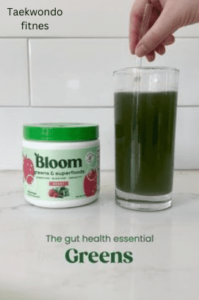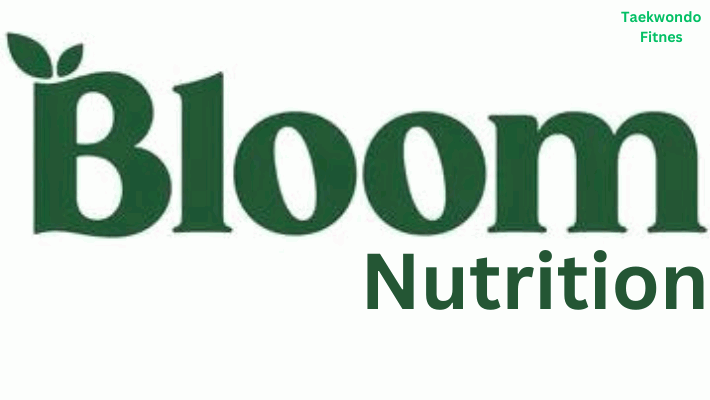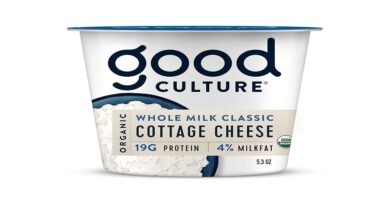The Bloom Nutrition Idea
Have you heard of the Bloom Nutrition Idea? It’s a trendy diet that has been gaining popularity in recent years. The idea behind it is to eat foods that are high in nutrients and low in calories, which can lead to weight loss and improved health. But what exactly does this diet entail? In this blog post, we’ll dive into the different types of bloom diets, their pros, and cons, what foods to eat on a bloom diet, some delicious recipes to try out, alternatives to the bloom nutrition idea, and more! So get ready for an informative read about all things bloom nutrition.
What is the Bloom Nutrition Idea?

The Bloom Nutrition Idea is a diet that focuses on eating nutrient-dense foods while limiting calorie intake. The goal of this approach is to achieve optimal health and wellness by providing the body with essential vitamins, minerals, and other nutrients.
This diet emphasizes consuming whole, unprocessed foods such as fruits, vegetables, lean proteins, nuts, seeds, and legumes. It also involves cutting back on high-calorie processed foods like sugary snacks and beverages.
One of the key principles of the Bloom Nutrition Idea is portion control. Eating smaller meals throughout the day can help stabilize blood sugar levels and prevent overeating at mealtimes.
Unlike fad diets that promise quick weight loss results through extreme calorie restriction or elimination of entire food groups, the Bloom Nutrition Idea encourages a balanced approach to eat for long-term sustainability.
This diet promotes healthy habits that can lead to improved physical health and mental well-being when followed consistently.
The Different Types of Bloom Diets
When it comes to the Bloom Nutrition Idea, there are different types of diets that you can choose from depending on your needs and preferences. Here are some of the most popular types of Bloom diets.
1) Plant-based diet: This type of diet promotes eating whole foods derived from plants such as fruits, vegetables, legumes, and grains while avoiding animal products like meat and dairy.
2) Mediterranean diet: This diet style is based on the regional cuisine of the Mediterranean Sea’s neighboring nations.It focuses on consuming plant-based foods along with healthy fats like olive oil, nuts, and fish.
3) Paleo diet: The paleo diet emphasizes eating whole foods similar to those consumed by our Paleolithic ancestors including lean meats, seafood, fruits, vegetables, nuts, and seeds while excluding processed food items.
4) Keto Diet: A ketogenic or keto diet restricts carbohydrates in favor of high-fat intake. To reach a state called ketosis which helps burn fat for energy instead of carbohydrates
Each kind has its benefits but requires proper planning when it comes to ensuring adequate nutrient intake. If you’re considering starting a Bloom Diet regime, consult a registered dietician or nutritionist before making any drastic changes in your dietary regimen
Pros and Cons of a Bloom Diet
Following a Bloom Diet has its upsides and downsides. It’s essential to weigh out the advantages and disadvantages before committing to this lifestyle change.
One of the most significant benefits is that it promotes a healthier overall diet. By consuming more fresh fruits, vegetables, whole grains, lean meats, and healthy fats such as nuts and seeds, you’ll get all the necessary nutrients for your body to function correctly. Besides leading to weight loss or maintenance in some cases.
However, the Bloom Diet may pose challenges for those with dietary restrictions or preferences like plant-based diets since animal products are allowed on some plans. Additionally, following these meal plans can be time-consuming because they require planning meals – which means prepping food over weekends or evenings after work.
Another disadvantage is expense; eating primarily organic foods can be financially challenging due to their higher cost than non-organic options. However, there are ways around this by buying produce when it’s in season locally or growing one’s garden.
Though if you’re looking for a way to improve your nutrition intake while also maintaining a healthy weight without giving up any food groups altogether then giving Bloom Nutrition Idea a try might just fit right into your life!
What Foods to Eat on a Bloom Diet?

If you’re considering a Bloom Diet, it’s important to know what foods are allowed on this plan. The idea behind the diet is to eat whole, nutrient-dense foods that support optimal health and well-being.
Incorporate lots of fruits and veggies into your meals as a start. These natural sources of vitamins, minerals, and fiber will help keep your body functioning at its best. Opt for colorful produce like berries, leafy greens, and sweet potatoes.
Next up are healthy fats – think avocados, nuts, seeds, and olive oil. These delicious ingredients can be used in a variety of dishes from salads to smoothies to stir-fries.
Protein-rich foods such as lean meats and fish also play an important role in the Bloom Diet. Choose high-quality sources that have been sustainably raised or caught whenever possible.
Make sure you’re getting enough complex carbohydrates in your diet through whole grains like quinoa or brown rice. These provide essential energy for daily activities while also providing additional nutrients.
Following a Bloom Diet means focusing on whole foods that nourish your body from the inside out!
Bloom Recipes
If you’re interested in trying out the Bloom Nutrition Idea, incorporating Bloom recipes into your diet can make it easier and more enjoyable. Here are a few recipe ideas to get you started:
First up is a delicious green smoothie that’s perfect for breakfast or as a snack. Blend spinach, frozen banana, almond milk, chia seeds, and vanilla extract until smooth.
For lunch or dinner, try making a quinoa salad with roasted vegetables like sweet potatoes and Brussels sprouts. Add in some chickpeas for protein and top it off with a simple vinaigrette made with olive oil, lemon juice, and Dijon mustard.
Another great option is grilled chicken or tofu skewers served with cauliflower rice cooked in coconut oil. Top it off with chopped cilantro and lime wedges for added flavor.
When it comes to desserts, there are plenty of options that fit within the Bloom Nutrition Idea. Try making apple slices topped with almond butter and cinnamon for a quick treat. Or whip up some avocado chocolate mousse by blending ripe avocados, cocoa powder, honey, and vanilla extract until creamy.
Experimenting with different recipes will help keep things interesting while sticking to the principles of the Bloom Nutrition Idea.
Alternatives to the Bloom Nutrition Idea
While the Bloom Nutrition Idea may work for some, it’s not for everyone. If you’re looking for alternative diets to try, there are many options available that can help you achieve your health goals.
One popular alternative is the Mediterranean diet which emphasizes whole grains, lean protein, and healthy fats such as olive oil. This diet has been shown to lower the risk of heart disease and other chronic conditions.
Another option is a plant-based or vegan diet which focuses on consuming only plant-based foods. This type of diet has been linked with weight loss and improved heart health.
For those who want to try a low-carb approach, the ketogenic diet may be an option. This high-fat and low-carb diet helps your body enter ketosis where it burns fat instead of carbohydrates for energy.
Intermittent fasting is another trend gaining popularity as an effective way to manage weight while improving overall health. It involves restricting calorie intake during certain periods or days throughout the week.
Ultimately, finding a sustainable dietary plan that works best for you depends on personal preferences and lifestyle habits. Before beginning any new food plan, make sure to speak with a medical practitioner.
Conclusion
In summary, the Bloom Nutrition Idea is a great way to improve your health and well-being. It offers various types of diets that cater to different lifestyles and preferences, making it easier for anyone to adopt.
While there are some potential drawbacks such as strict dietary restrictions and difficulty in maintaining the diet long-term, the benefits of a Bloom Diet cannot be disregarded. By consuming nutrient-dense foods, you can enjoy improved energy levels, better digestion, enhanced mental clarity, and overall wellness.
Remember that any diet or lifestyle change requires effort and commitment. Before trying out the Bloom Nutrition Idea or any other type of diet plan, consult with your healthcare provider first to ensure it is safe for you.
With dedication and discipline, incorporating healthy eating habits into your daily routine can become second nature. So why not give the Bloom Nutrition Idea a try? Your body will thank you!



